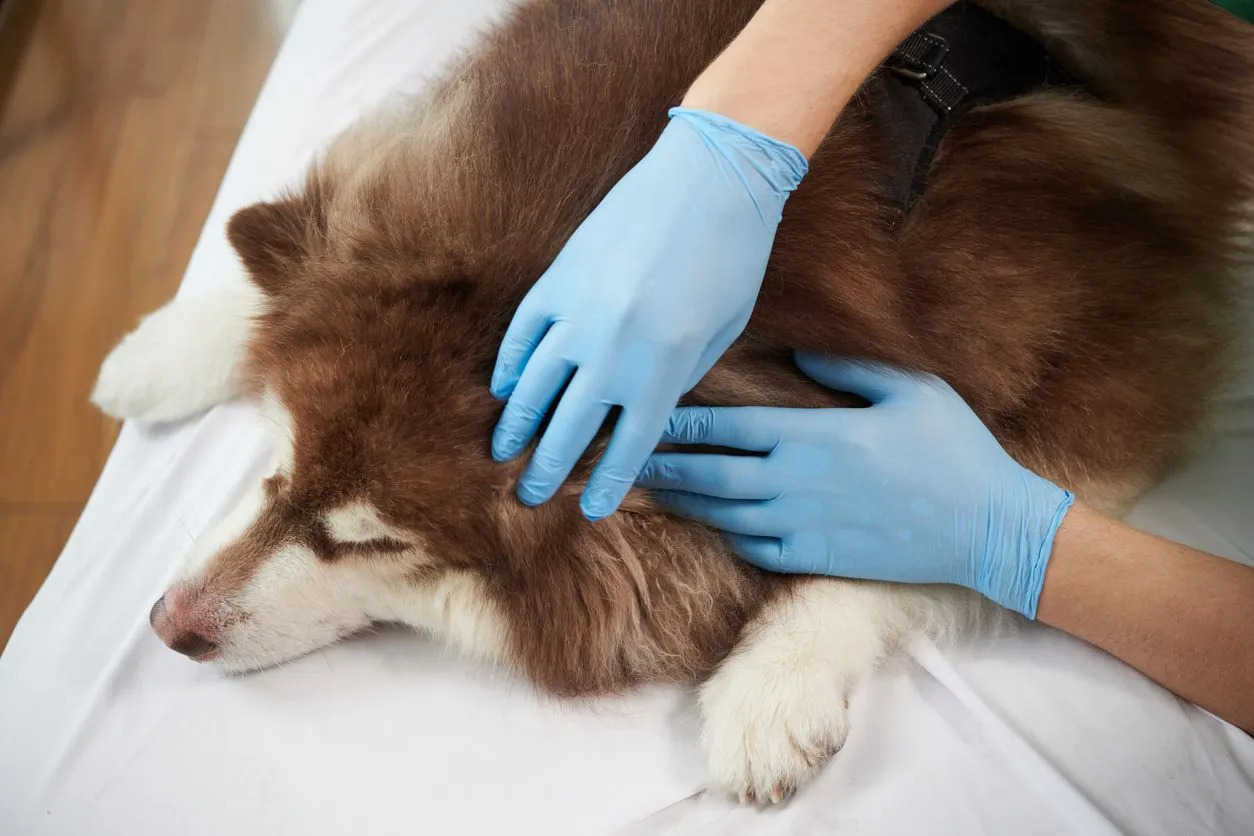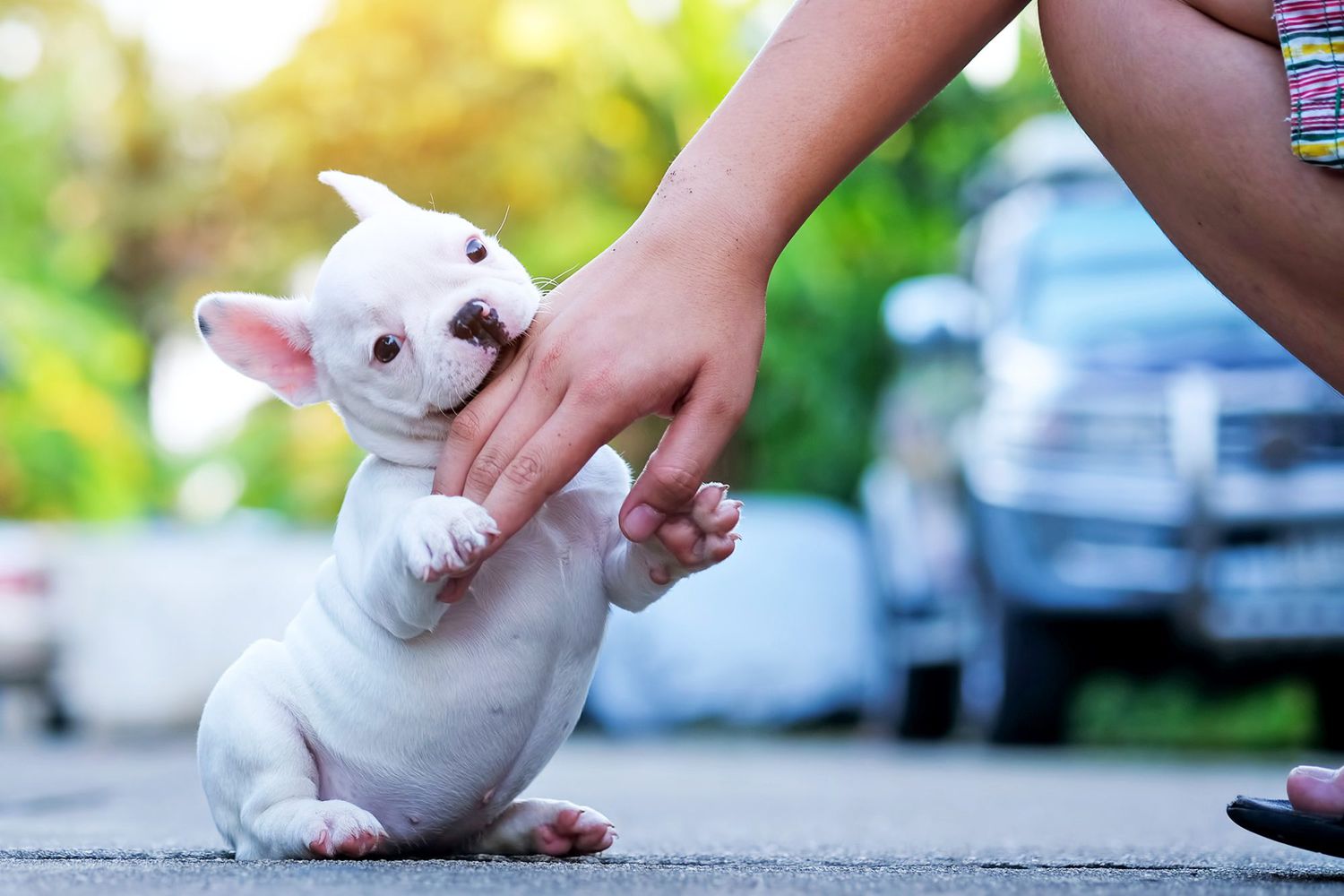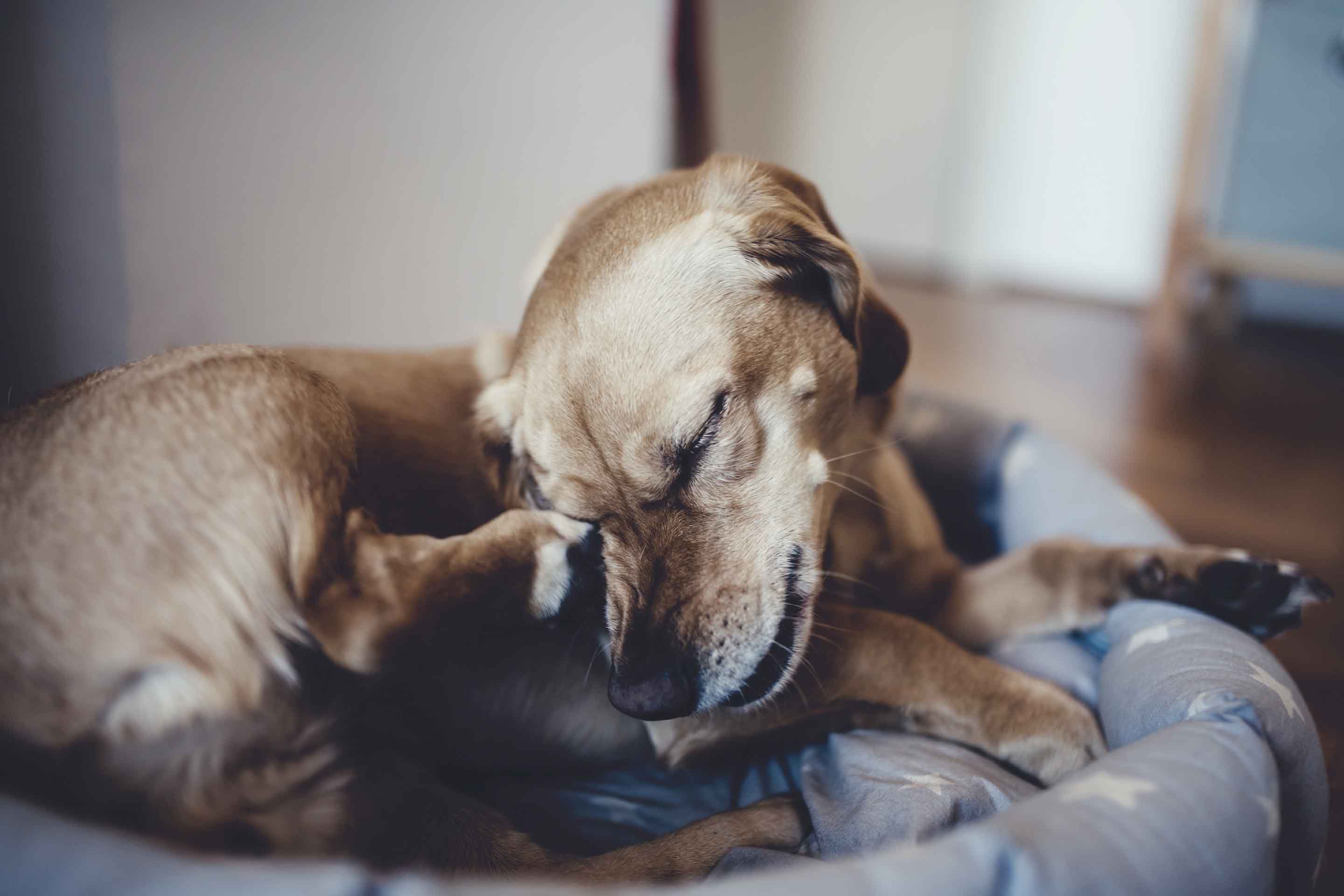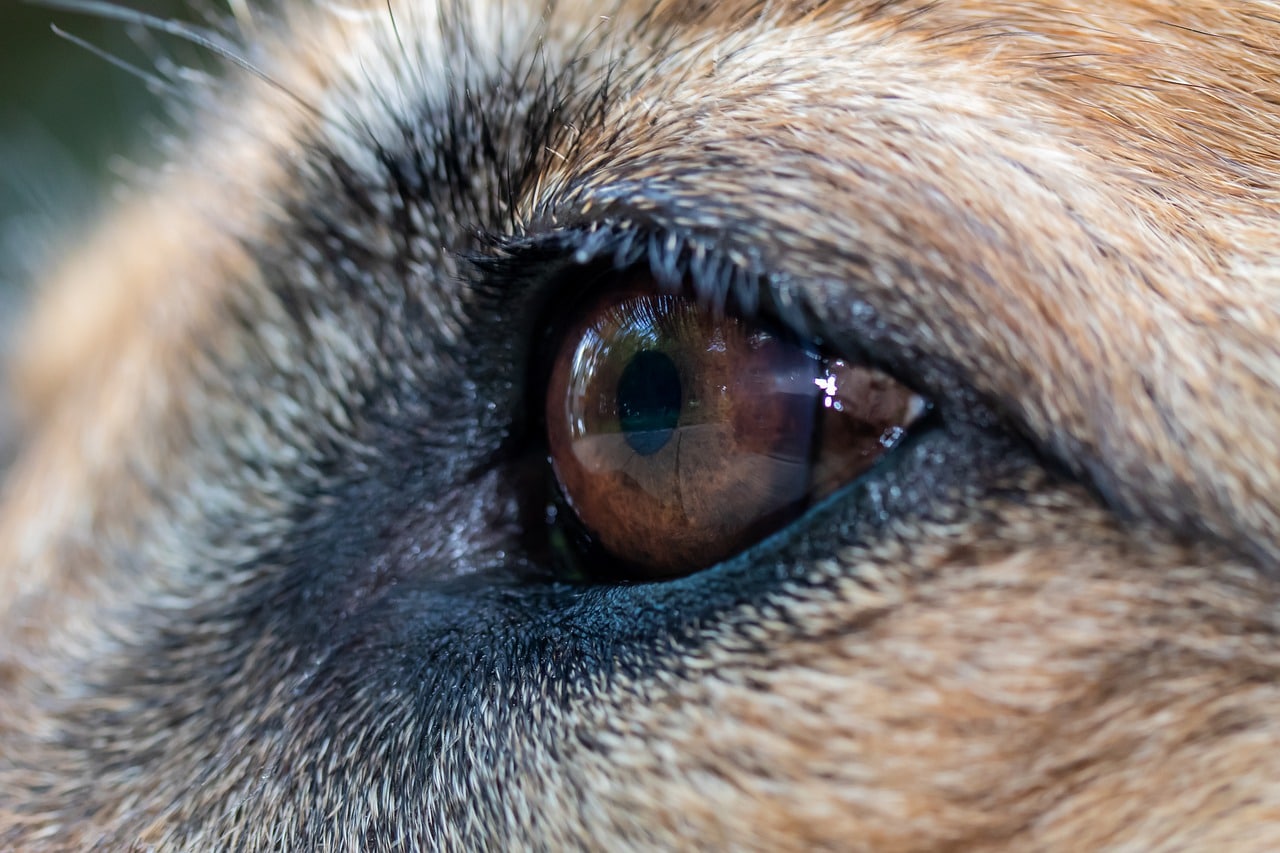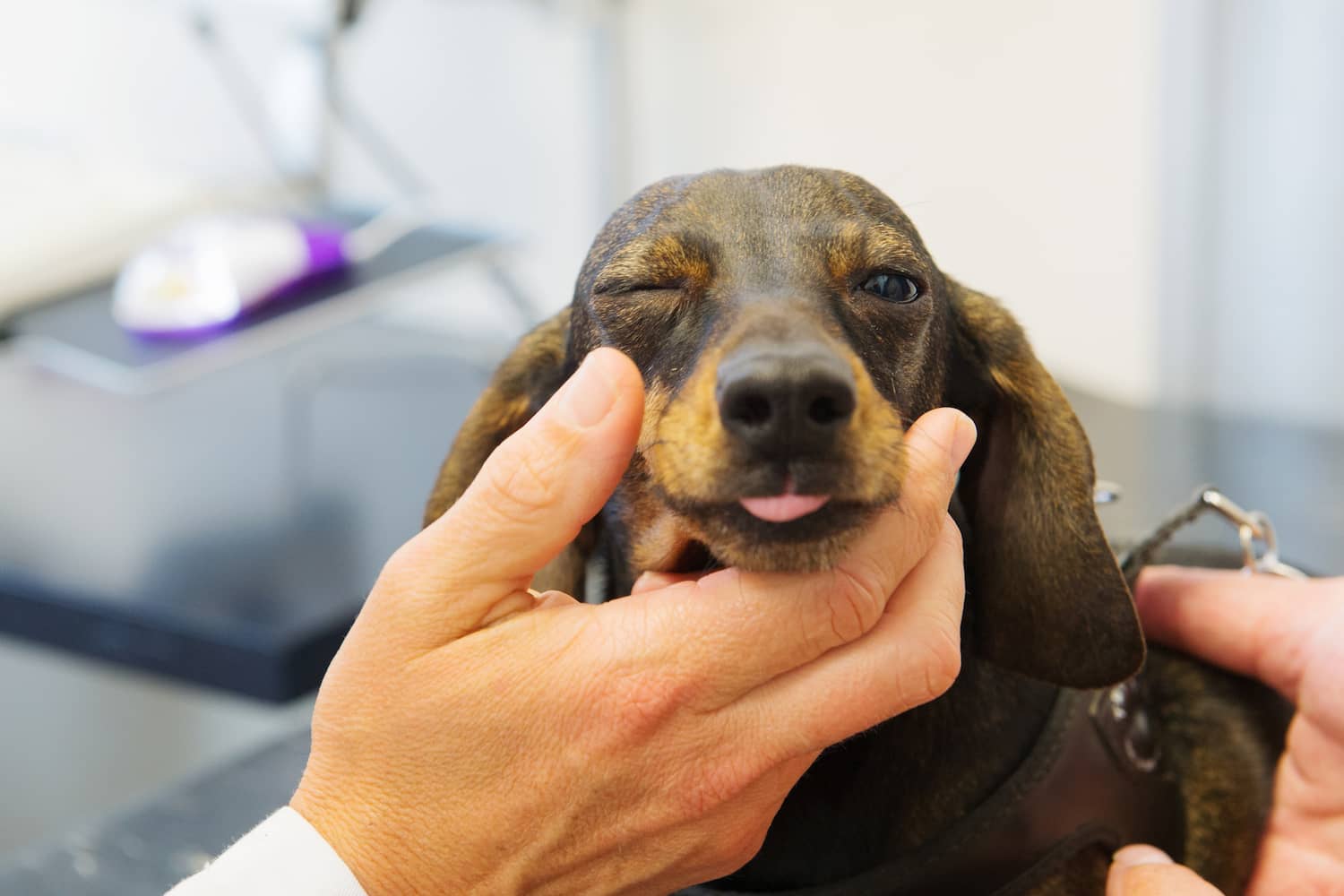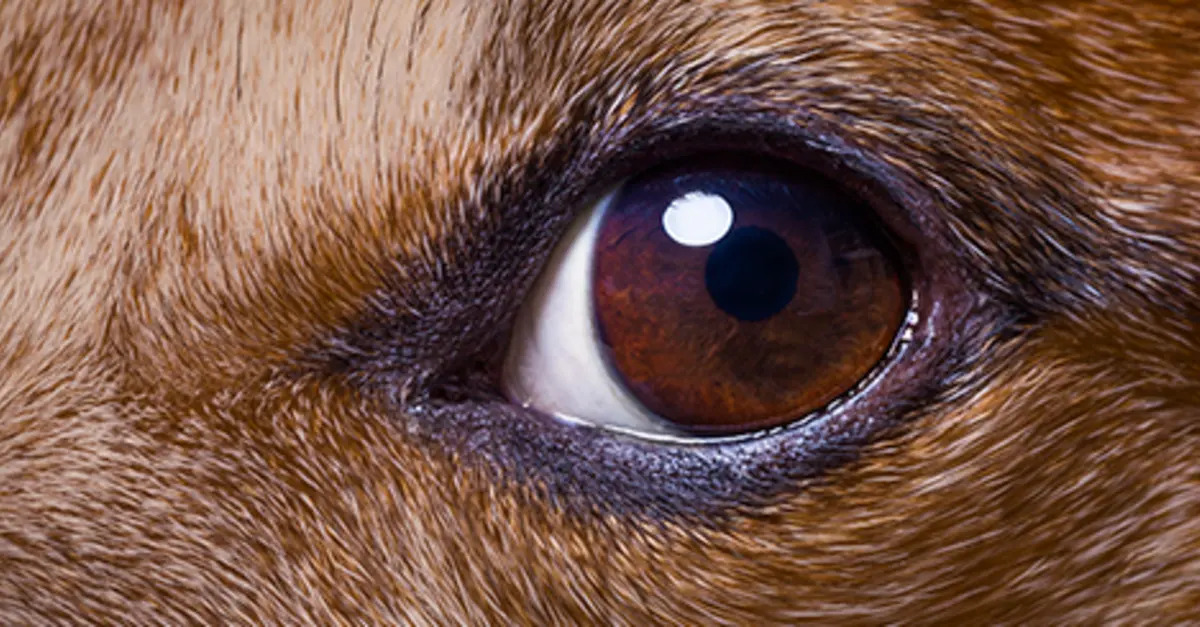Home>Health & Wellness>Common Health Issues>Eye and Ear Health>Why Does My Dog Have A Red Spot In Her Eye
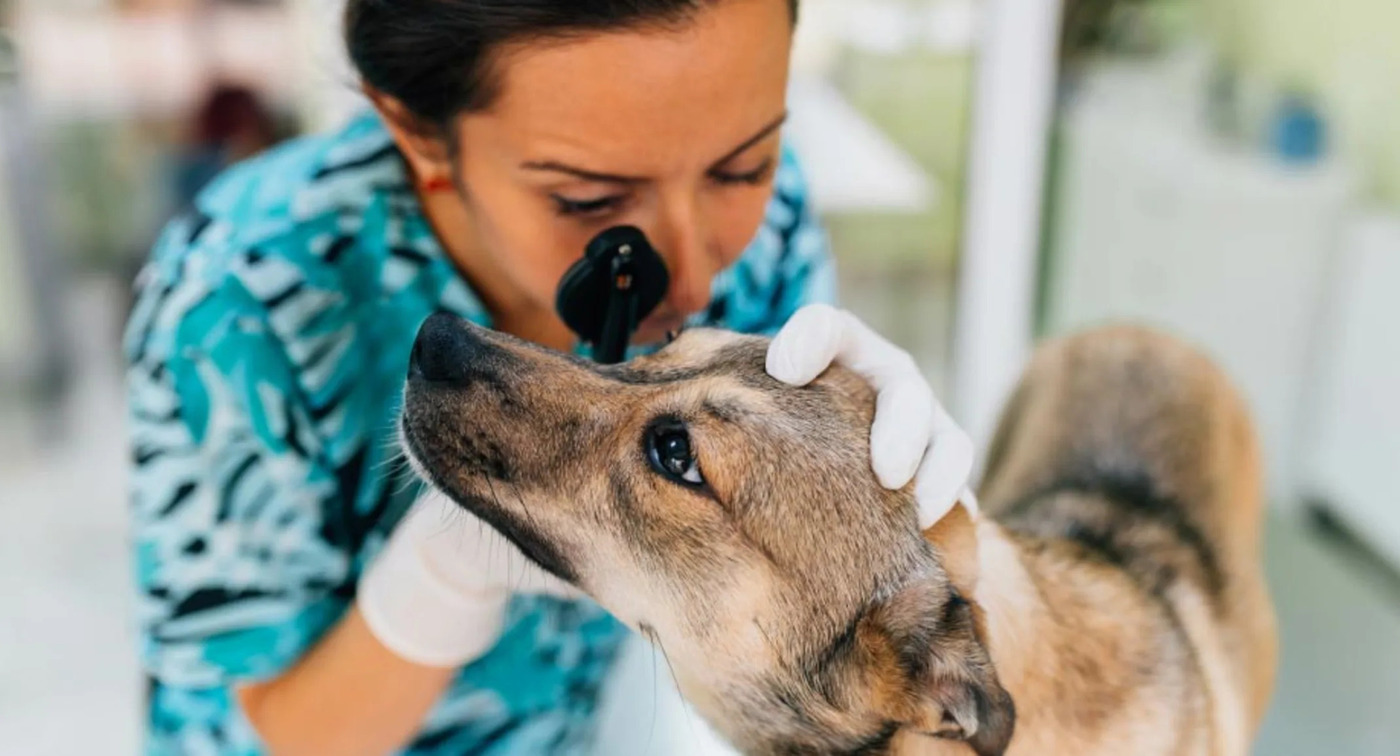

Eye and Ear Health
Why Does My Dog Have A Red Spot In Her Eye
Published: February 12, 2024
Learn about the causes of red spots in your dog's eyes and how to maintain their eye and ear health. Get expert tips and advice here.
(Many of the links in this article redirect to a specific reviewed product. Your purchase of these products through affiliate links helps to generate commission for Pawsomeoldies.com, at no extra cost. Learn more)
Table of Contents
Introduction
As a devoted pet owner, it's natural to be concerned when you notice a red spot in your dog's eye. Our furry companions rely on their keen sense of sight to navigate the world around them, making any issues with their eyes a cause for immediate attention. Understanding the potential reasons behind these red spots and knowing when to seek veterinary care is crucial for ensuring the well-being of our beloved canine friends.
In this comprehensive guide, we will delve into the intricate anatomy of a dog's eye, explore the common causes of red spots in their eyes, discuss when it's necessary to seek professional veterinary care, and outline the available treatment options. Additionally, we will provide valuable insights on how to prevent red spots from occurring in the first place, empowering you to take proactive measures to safeguard your dog's ocular health.
By gaining a deeper understanding of the factors contributing to red spots in a dog's eye and learning how to address and prevent them, you can play a pivotal role in preserving your dog's visual health and overall well-being. Let's embark on this enlightening journey to unravel the mysteries behind red spots in our canine companions' eyes and equip ourselves with the knowledge needed to ensure their ocular health remains in optimal condition.
Read more: Why Does My Dog Have A Bump By Her Eye
Understanding the Anatomy of a Dog's Eye
The eyes are a marvel of biological engineering, and this holds true for our canine companions as well. Understanding the intricate anatomy of a dog's eye is essential for comprehending the potential issues that may arise, such as red spots.
A dog's eye shares many similarities with the human eye, yet there are notable differences that cater to their unique visual needs. The outermost layer of the eye is the cornea, which acts as a protective barrier and helps to refract light onto the lens. The lens, located behind the iris, is responsible for focusing light onto the retina, where the process of vision begins.
One distinctive feature of a dog's eye is the tapetum lucidum, a reflective layer behind the retina that enhances their night vision. This structure is responsible for the characteristic "glowing" eyes seen in dogs when light is shone upon them in the dark.
The iris, the colored part of the eye, regulates the amount of light entering the eye through its adjustable opening, the pupil. This mechanism allows dogs to adapt to varying light conditions, ensuring optimal vision in different environments.
The retina, akin to a camera's film, contains specialized cells called photoreceptors that capture light and convert it into neural signals. These signals are then transmitted to the brain via the optic nerve, where they are interpreted as visual information.
Understanding the anatomy of a dog's eye provides insight into the complexity of their visual system and the delicate structures that contribute to their remarkable sense of sight. By gaining a deeper appreciation for the intricacies of a dog's eye, we can better comprehend the potential issues that may affect their ocular health, including the presence of red spots.
Common Causes of Red Spots in a Dog's Eye
Red spots in a dog's eye can be indicative of various underlying issues, ranging from minor irritations to more serious conditions. Understanding the common causes of these red spots is crucial for identifying the root of the problem and taking appropriate measures to address it. Here are some prevalent factors that may lead to red spots in a dog's eye:
-
Conjunctivitis: Also known as "pink eye," conjunctivitis is characterized by inflammation of the conjunctiva, the thin, transparent tissue covering the white part of the eye and lining the eyelids. This condition can result in redness, discharge, and discomfort for the affected dog.
-
Corneal Ulcers: Corneal ulcers, or abrasions on the surface of the cornea, can lead to red spots in the affected eye. These ulcers may be caused by trauma, foreign objects, or underlying eye conditions, and they require prompt veterinary attention to prevent complications.
-
Allergies: Dogs, like humans, can experience allergic reactions that manifest in their eyes. Allergens such as pollen, dust, or certain foods can trigger redness and irritation, leading to the appearance of red spots in the eye.
-
Foreign Bodies: The presence of foreign objects, such as dust, dirt, or small particles, in the eye can cause irritation and redness. If left unaddressed, these foreign bodies can lead to further complications and discomfort for the dog.
-
Dry Eye (Keratoconjunctivitis Sicca): This condition occurs when the eye does not produce enough tears to maintain proper lubrication. As a result, the eye may become dry, red, and prone to irritation, potentially leading to the development of red spots.
-
Glaucoma: Glaucoma is a serious eye condition characterized by increased pressure within the eye, which can lead to redness, pain, and vision changes. If left untreated, glaucoma can cause irreversible damage to the eye and may result in vision loss.
-
Infections: Bacterial, viral, or fungal infections can affect the eyes and lead to red spots, discharge, and discomfort for the dog. Prompt identification and treatment of the specific type of infection are essential for the dog's ocular health.
-
Inflammation: Various forms of eye inflammation, such as uveitis or episcleritis, can result in redness and the appearance of red spots in the affected eye. Inflammation may be triggered by underlying health conditions or environmental factors.
By being aware of these common causes of red spots in a dog's eye, pet owners can promptly recognize potential issues and seek appropriate veterinary care to address the underlying conditions. Early intervention and proper treatment are vital for preserving the dog's ocular health and overall well-being.
When to Seek Veterinary Care
Recognizing the signs that warrant veterinary attention is crucial for safeguarding a dog's ocular health. While minor eye irritations may resolve on their own, certain symptoms indicate the need for prompt veterinary care. Here are the key indicators that should prompt a visit to the veterinarian:
-
Persistent Redness: If the red spot in your dog's eye persists or worsens over time, it is essential to seek professional evaluation. Prolonged redness may signify an underlying issue that requires targeted treatment.
-
Excessive Tearing or Discharge: Unusual tearing or discharge from the eye, especially if accompanied by a change in consistency or color, can indicate an infection, injury, or other ocular abnormalities that necessitate veterinary assessment.
-
Squinting or Blinking Abnormally: Dogs may squint or blink excessively when experiencing eye discomfort. These behaviors can signal pain, irritation, or the presence of a foreign body in the eye, all of which warrant veterinary attention.
-
Visible Changes in the Eye: Any noticeable changes in the appearance of the eye, such as cloudiness, swelling, or the development of new lesions or growths, should be promptly evaluated by a veterinarian to rule out serious conditions.
-
Behavioral Changes: If your dog displays signs of discomfort, such as rubbing or pawing at the affected eye, avoiding bright light, or exhibiting unusual sensitivity to touch around the eye area, it is advisable to seek veterinary care to address potential underlying issues.
-
Impaired Vision: Any indication of vision impairment, such as bumping into objects, difficulty navigating familiar spaces, or reluctance to engage in activities that rely on visual cues, warrants immediate veterinary assessment to determine the cause and prevent further vision loss.
-
History of Eye Trauma: If your dog has experienced recent eye trauma, such as being hit by a foreign object or engaging in rough play that may have resulted in an eye injury, seeking veterinary care is essential to assess and address any resulting damage.
-
Underlying Health Conditions: Dogs with pre-existing health conditions, such as diabetes or autoimmune disorders, may be more susceptible to eye complications. If your dog has underlying health issues, it is important to be vigilant for any changes in their ocular health and seek veterinary care as needed.
By remaining attentive to these signs and promptly seeking veterinary care when necessary, pet owners can ensure that any potential issues affecting their dog's eyes are addressed in a timely manner, promoting optimal ocular health and overall well-being for their beloved canine companions.
Treatment Options for Red Spots in a Dog's Eye
Upon identifying red spots in a dog's eye, prompt intervention is crucial to address the underlying cause and alleviate any discomfort or potential complications. The appropriate treatment approach may vary depending on the specific condition responsible for the red spots. Here are the common treatment options for red spots in a dog's eye:
-
Veterinary Examination: When red spots are observed in a dog's eye, scheduling a veterinary examination is the first step towards identifying the underlying cause. A thorough ocular assessment allows the veterinarian to evaluate the extent of the redness, check for any associated symptoms, and conduct specialized tests to pinpoint the underlying issue.
-
Medicated Eye Drops or Ointments: Depending on the diagnosis, the veterinarian may prescribe medicated eye drops or ointments to address the specific condition causing the red spots. These medications may contain antibiotics, anti-inflammatory agents, or other therapeutic compounds tailored to treat infections, inflammation, or other underlying issues.
-
Topical Lubricants: In cases where dry eye (keratoconjunctivitis sicca) is identified as the cause of red spots, topical lubricants or artificial tears may be recommended to alleviate dryness and provide essential moisture to the eye. These lubricants help maintain proper ocular lubrication and reduce irritation.
-
Antibacterial or Antifungal Treatment: If the red spots are attributed to a bacterial or fungal infection, the veterinarian may prescribe specific medications to combat the underlying microbial cause. Antibacterial or antifungal treatments are essential for addressing the infection and promoting the dog's ocular health.
-
Anti-inflammatory Medications: In instances of eye inflammation, such as uveitis or episcleritis, the use of anti-inflammatory medications may be necessary to reduce redness, swelling, and discomfort. These medications help alleviate the inflammatory response and promote healing within the affected eye.
-
Surgical Intervention: In cases of corneal ulcers or other severe ocular injuries, surgical intervention may be required to address the underlying issue and facilitate the healing process. Surgical procedures, such as corneal debridement or grafting, aim to repair damage and restore the integrity of the affected eye.
-
Management of Underlying Conditions: If red spots in the dog's eye are linked to underlying health conditions, such as allergies, autoimmune disorders, or systemic diseases, comprehensive management of these conditions is essential. This may involve dietary modifications, allergy management strategies, or systemic medications to address the root cause of the ocular manifestations.
It is important to note that the specific treatment approach will be determined based on the veterinarian's assessment and the underlying cause of the red spots. Pet owners should adhere to the prescribed treatment regimen, administer medications as directed, and attend follow-up appointments to monitor the dog's ocular health and ensure the effectiveness of the treatment plan.
By seeking timely veterinary care and diligently following the recommended treatment protocol, pet owners can contribute to the successful resolution of red spots in their dog's eye and promote optimal ocular health for their beloved canine companions.
Read more: Why Does My Dog Have A White Spot In His Eye
Preventing Red Spots in a Dog's Eye
Preventing red spots in a dog's eye is a proactive approach that focuses on maintaining optimal ocular health and minimizing the risk of ocular irritations and conditions. By implementing preventive measures and incorporating good eye care practices into your dog's routine, you can significantly reduce the likelihood of red spots and promote long-term eye health. Here are essential strategies for preventing red spots in a dog's eye:
-
Regular Eye Examinations: Schedule routine eye examinations with a veterinarian to monitor your dog's ocular health. Regular check-ups allow for the early detection of potential issues and enable prompt intervention before minor irritations escalate into more significant problems.
-
Maintaining a Clean Environment: Keep your dog's living environment clean and free from potential eye irritants, such as dust, pollen, and debris. Regularly clean your dog's bedding, living spaces, and surrounding areas to minimize exposure to allergens and foreign particles that could lead to eye irritation.
-
Proper Grooming: Regular grooming, including gentle cleaning around the eyes, helps prevent the accumulation of dirt and discharge that can contribute to eye irritations. Use a damp, soft cloth to gently wipe away any debris or discharge around the eyes, taking care to avoid direct contact with the eyes.
-
Eye Protection: When engaging in outdoor activities, consider using protective eyewear designed for dogs to shield their eyes from potential hazards, such as dust, wind, and ultraviolet (UV) radiation. Protective eyewear can help prevent eye injuries and reduce the risk of irritations that may lead to red spots.
-
Nutritious Diet: Provide your dog with a balanced and nutritious diet that supports overall health, including ocular wellness. Essential nutrients, such as omega-3 fatty acids, vitamin A, and antioxidants, play a vital role in maintaining eye health. Consult with your veterinarian to ensure your dog's diet supports their ocular needs.
-
Regular Exercise: Regular physical activity promotes overall well-being, including ocular health. Engage your dog in regular exercise to support circulation and overall vitality, which can contribute to healthy eyes.
-
Preventing Trauma: Take precautions to prevent eye trauma, especially during activities such as playtime and outdoor adventures. Avoid situations that may lead to eye injuries, and provide appropriate supervision to minimize the risk of accidents that could harm your dog's eyes.
-
Prompt Treatment of Underlying Conditions: If your dog has pre-existing health conditions that may impact their ocular health, such as allergies or autoimmune disorders, work closely with your veterinarian to manage these conditions effectively. By addressing underlying health issues, you can help prevent ocular manifestations, including red spots in the eye.
By incorporating these preventive measures into your dog's care regimen and remaining attentive to their ocular health, you can actively contribute to the prevention of red spots and promote the overall well-being of your canine companion. Remember that proactive eye care and regular veterinary oversight are key components of maintaining optimal ocular health for your beloved dog.
Conclusion
In conclusion, the presence of red spots in a dog's eye can serve as a visual indicator of various underlying issues, ranging from minor irritations to potentially serious conditions. Understanding the common causes of red spots, recognizing the signs that warrant veterinary care, and being aware of the available treatment options are essential for safeguarding a dog's ocular health. By remaining attentive to their ocular well-being and taking proactive measures to prevent red spots, pet owners can play a pivotal role in preserving their beloved canine companions' visual health and overall well-being.
It is crucial for pet owners to prioritize regular eye examinations for their dogs, as these routine check-ups enable early detection of potential issues and facilitate prompt intervention when necessary. Additionally, maintaining a clean environment, proper grooming, and providing a nutritious diet contribute to minimizing the risk of ocular irritations and promoting long-term eye health for dogs.
When red spots are observed in a dog's eye, seeking prompt veterinary care is paramount. Persistent redness, excessive tearing, visible changes in the eye, and behavioral alterations should prompt a visit to the veterinarian to address potential underlying issues. By adhering to the prescribed treatment regimen and attending follow-up appointments, pet owners can actively contribute to the successful resolution of red spots in their dog's eye and promote optimal ocular health.
Preventive measures, such as eye protection during outdoor activities, regular exercise, and prompt treatment of underlying health conditions, are integral components of maintaining optimal ocular health for dogs. By incorporating these strategies into their dog's care regimen, pet owners can actively contribute to the prevention of red spots and support the overall well-being of their canine companions.
In essence, by gaining a deeper understanding of the factors contributing to red spots in a dog's eye and learning how to address and prevent them, pet owners can empower themselves to take proactive measures in safeguarding their dog's ocular health. Through attentive care, regular veterinary oversight, and a commitment to preventive measures, pet owners can ensure that their beloved canine companions enjoy a lifetime of clear, healthy vision and ocular well-being.



